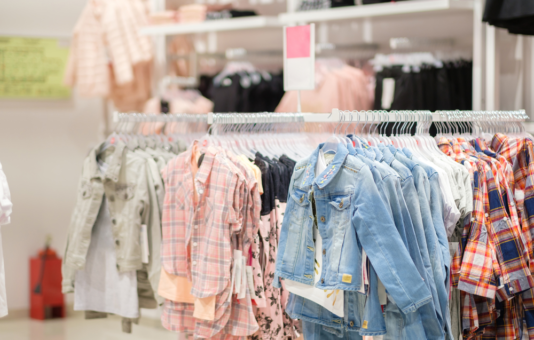
The kidswear industry is entering a period of unprecedented innovation and change. As societal values shift and consumer expectations evolve, brands and retailers must stay informed to remain competitive. Kidswear fashion 2025 is more than just about what children wear it’s a reflection of broader cultural trends, including sustainability, inclusivity, and technological integration. In this article, we will explore the top kidswear trends shaping the future, and provide actionable insights for retailers to align their strategies.
Sustainability is no longer just a buzzword—it’s a necessity. With growing environmental concerns, parents are prioritising eco-friendly choices when shopping for their children. Sustainable kidswear focuses on clothing made from organic cotton, bamboo, and recycled fabrics. These materials are not only environmentally responsible but also gentle on children’s sensitive skin.
Retailers investing in sustainable collections can cater to the growing demand for “green” fashion. Brands like Patagonia and Boden are setting benchmarks with their environmentally conscious kidswear lines. Future trends also include clothing designed for longevity—adjustable waistbands, reversible garments, and durable fabrics that can be passed down to younger siblings or resold, promoting circular fashion.
The fusion of technology and fashion is reshaping kidswear. Tech-integrated apparel includes features like temperature-regulating fabrics, UV-blocking materials, and even wearable tech like GPS-enabled jackets. These innovations cater to parents who seek added functionality and safety in their children’s clothing.
For example, temperature-regulating fabrics ensure comfort in varying weather conditions, while GPS-enabled items provide peace of mind for parents. Tech-based features are becoming more affordable, meaning they are likely to become mainstream in the kidswear fashion 2025 landscape.
In the era of inclusivity, gender-neutral clothing is breaking barriers in the kidswear segment. Gone are the days of strictly pink for girls and blue for boys. Today’s parents prefer versatile, unisex clothing that aligns with modern values. Gender-neutral kidswear focuses on neutral tones, simple patterns, and multifunctional designs.
This shift is not just a social movement but also a practical choice. Gender-neutral collections offer broader resale or reuse options, as clothing is not restricted to one gender. Retailers that embrace this trend can appeal to a wider customer base while demonstrating a commitment to inclusivity.
Globalisation has inspired the blending of cultural styles, making it a standout trend in kidswear fashion 2025. Parents are now seeking outfits that incorporate cultural prints, traditional embroidery, and vibrant ethnic motifs.
For example, a kidswear brand might offer a fusion of Indian block prints with Western silhouettes or African tribal patterns on modern activewear. These designs allow parents to celebrate diversity and introduce children to global cultures through fashion. Retailers can collaborate with artisans and craftspeople to create authentic collections that tell a story.
Comfort remains a non-negotiable aspect of kidswear, especially post-pandemic. Soft, breathable fabrics and relaxed fits are driving the demand for comfort-driven fashion. Activewear-inspired designs, including tracksuits, leggings, and lightweight jackets, are particularly popular among parents who prioritise functionality.
This trend is also influenced by the rise in children’s participation in sports and outdoor activities. Clothing that is flexible, durable, and easy to wash ensures practicality for active kids. Retailers can explore collaborations with sportswear brands to create hybrid lines that combine aesthetics with comfort.
To succeed in this competitive landscape, retailers must adopt innovative and flexible approaches.
Strong partnerships with kidswear wholesale suppliers are essential for ensuring a steady supply of trendy and high-quality clothing. Retailers should choose suppliers who are aligned with emerging trends, particularly sustainability and tech integration.
Additionally, sourcing from ethical suppliers enhances brand reputation and aligns with consumer values. Retailers can highlight these partnerships in their marketing campaigns to build trust with their audience.
In the digital era, a robust online presence is crucial. Parents increasingly prefer shopping online for convenience and variety. Retailers must invest in user-friendly websites, mobile apps, and personalised recommendations to cater to this audience.
Social media platforms like Instagram and Pinterest are powerful tools for showcasing collections. Collaborating with influencers and using visually appealing content can drive traffic and conversions.
Circular fashion involves designing products with a lifecycle approach, promoting reuse and recycling. Retailers can implement trade-in programmes where customers exchange old clothes for discounts, or launch pre-loved clothing sections. These initiatives not only reduce waste but also attract eco-conscious buyers.
For brick-and-mortar stores, the focus should shift from simple transactions to memorable experiences. Retailers can introduce DIY design stations where children customise their clothing or host themed events to attract families.
By blending physical and digital experiences, retailers can create a seamless omnichannel journey that enhances customer engagement and loyalty.
The kidswear market is expected to see significant growth by 2025, with sustainability and technology driving consumer choices. Retailers who embrace trends like sustainable kidswear and tech-enabled designs will be better positioned to capture market share. Moreover, aligning with values such as inclusivity and cultural representation can build long-term customer loyalty.
The future of kidswear is a blend of innovation, responsibility, and adaptability. As we move into 2025, the emphasis on kidswear fashion 2025 will go beyond aesthetics, focusing on functionality, sustainability, and inclusivity. Retailers who stay ahead of these kidswear trends will not only meet consumer expectations but also contribute to shaping a more progressive and sustainable fashion industry.
Comments